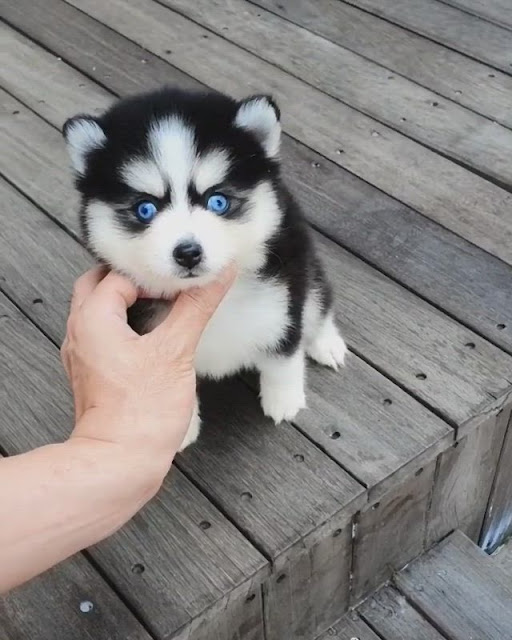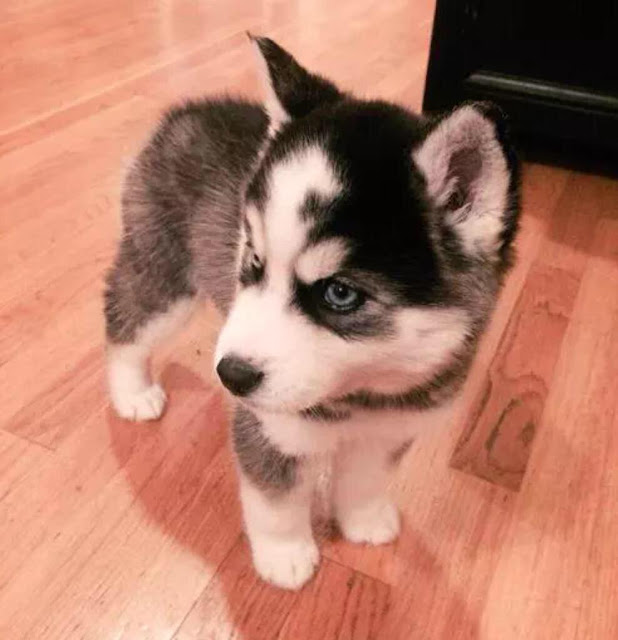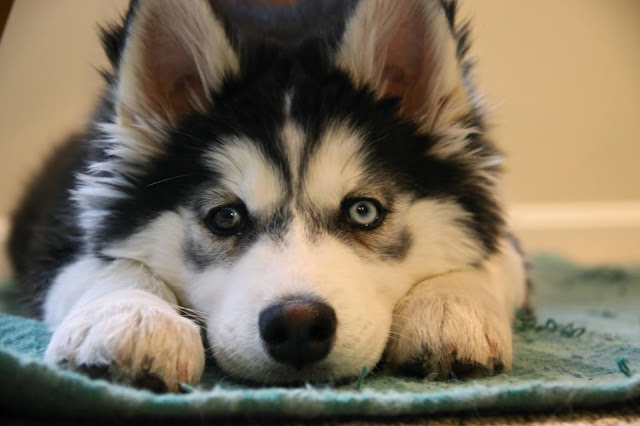 |
| Husky dog baby husky |
Baby Huskies are beautiful! We all know it, as puppies they are super cute, and as adults they continue to attract attention with their fluffy fur and wolf-like appearance.Many fall for its charms (and we do not blame them), but if you really want to have one, here we show you the most important preliminary steps that you should take into account before deciding if it is the breed that best suits you (and you too he).
What to consider if you want to have baby huskies
Siberian huskies shed twice a year, perhaps this is one of the most important preliminary steps to take into account. And if you live in an area where the heat goes above 25 degrees all year round, get ready to have hair on your clothes 365 days a year.All dogs (even short-haired ones) shed hair, but during shedding periods for Siberian Husky, you will find hair floating around the house. Hairballs on the floor, strands on the couches ... wow, you can find a hair on your plate of food before bringing it to the table.They require you to have the time to brush it at least once or twice a week, and in the shedding period, daily, Husky dog baby husky. This point is super important, because unfortunately it is the reason that many people who ignore the care of the race, end up giving it up for adoption or (which seems frightening to us), abandoning it on the street.The Siberian husky has a great herd instinct, you must bear in mind that if you are a lonely person this breed is not for you.
They are dogs that are very attached to the owner so, if you are one of those who is absent from home for many hours or days, or you are going to leave it in the kennel for long periods of time, you can develop the so-called “kennel fever ”. You must take these previous steps into account since by not being in contact with their "herd", especially the baby huskies will present depression that can cause vomiting and lack of appetite. Simply put, they don't like to be alone.
The energy of the race.The breed has too much energy and baby huskies are no exception, they were designed to pull sleds for days and long distances that energy is something they never lack.
Putting them activities that use up those energies, both physical and mental, can be very helpful for their development and behavior. Specially to prevent them from breaking and chewing all kinds of things in your house (although that will not prevent you from being left with only a sock, or shoe, without books, etc).Running on a leash, long walks, interactive toys, and of course, TRAINING, will always be the best for your puppy.
Baby huskies
Baby huskies
Need for space for huskies.
Another point to consider in a very specific way is the need for space for baby huskies. For the same from the previous point, that your Husky has a wide place to run will always be the best. However, this does not mean that you cannot have it in an apartment. In that case, you will have to take him out for a walk more often.You must be aware that they destroy your garden ALWAYS that you allow it, if you are not attentive in a matter of minutes, they will remodel it. If you are a lover of your garden, or you have a vegetable garden, and you almost love plants more than your children, better forget about a Husky, because they also love plants ... but to eat them! They also love to make holes in the ground. With a lot of patience and training, some large potted plants will probably survive, but we don't promise you anything.
Baby Huskies are very friendly, both with other dogs and with other animals and even with people so forget them as guard dogs.
If you are looking for a large dog that will scare away burglars from your home, we recommend that you look for another breed, because the Husky almost never barks (which your neighbors will appreciate until they hear him howl), and they are so affectionate, that when a stranger enters to your home, will welcome you. Of course, there are exceptions, but the breed in general is not the best for guard and protection.
Bath time with the baby huskies.
Huskies have double fur (a short and a long coat) that is thermal for the animal and therefore a headache to bathe it.
This double layer makes your hair somewhat waterproof, so getting the water to touch your skin is… well, impossible not, but you will need patience. The good thing here is that they do not need a bath more than once a month, because they have practically no odor, and you can avoid the annoying and very long work that is to bathe him by sending him to a canine aesthetic. But if the joke is not to spend and / or do it yourself, put a bench, put on comfortable clothes, music and several kilos of patience (especially if your dog is very uncooperative).
One recommendation: DO NOT CUT HER HAIR OR CLAP IT. As you read a few lines ago, his fur is thermal, so if you live in a warm place and you think that with that you help him avoid heat.
Having a dog always presents challenges, and if after reading these previous steps you are willing to overcome all those challenges for him, the fun and loving moments that baby huskies will offer you will never change in your life. They are super affectionate, loyal, very funny and expressive ... They will steal your heart without you noticing!
If you want to learn more about the breed or belong to a group of lovers of it, we invite you to the Facebook group by clicking here, Husky dog baby husky.



